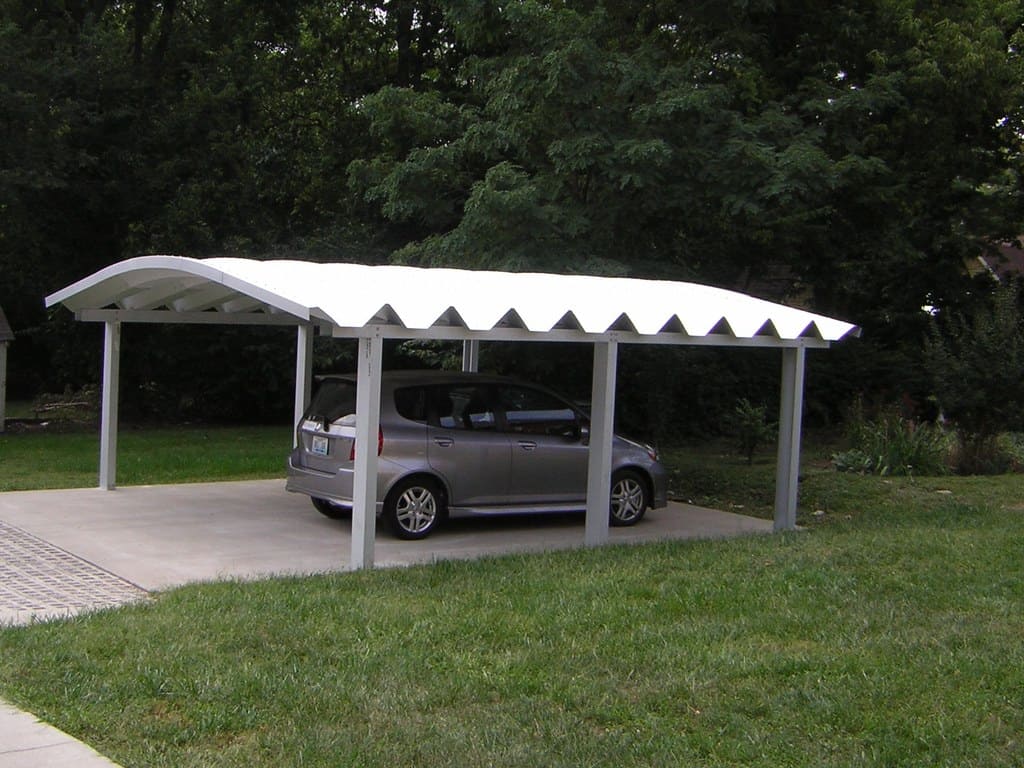If you don’t have a garage or a covered area to park your car, you might think about using a gazebo. But most gazebos are not suitable for a carport because of their shape and height. Gazebos are often six or eight-sided and raised off the ground. But, square-shaped gazebos may work for a carport if they are big enough to fit a car.
In this article, we will explain why most gazebos are not suitable for carports and why you need to consider other outdoor structures that can work better. We will give you suggestions for attractive and functional alternatives to a gazebo that you can use to park your car safely and protect it from the weather.
Can a gazebo be used as a carport: If you need a semi-permanent or permanent structure to protect your car, you might have seen pergolas and gazebos. These are outdoor structures that can give you shade and a place to hang out outside. They can also be a cheap and easy way to cover your car. You can even set them up on your own!
What is a Carport and Its Purpose?
A carport is a structure that is built to protect cars from the sun, rain, and snow. It can be attached to a building or stand alone and typically has at least two open sides. People use carports when they do not have a garage or need extra space for parking.
In Australia, the average size of a single carport is around 3 meters by 6 meters by 2.4 meters, but this can vary based on whether you build it yourself or buy a carport kit. Carports are a cost-effective solution for car owners who want to protect their cars from the elements without the expense of building a garage.
Can a Gazebo Be Used as a Carport?
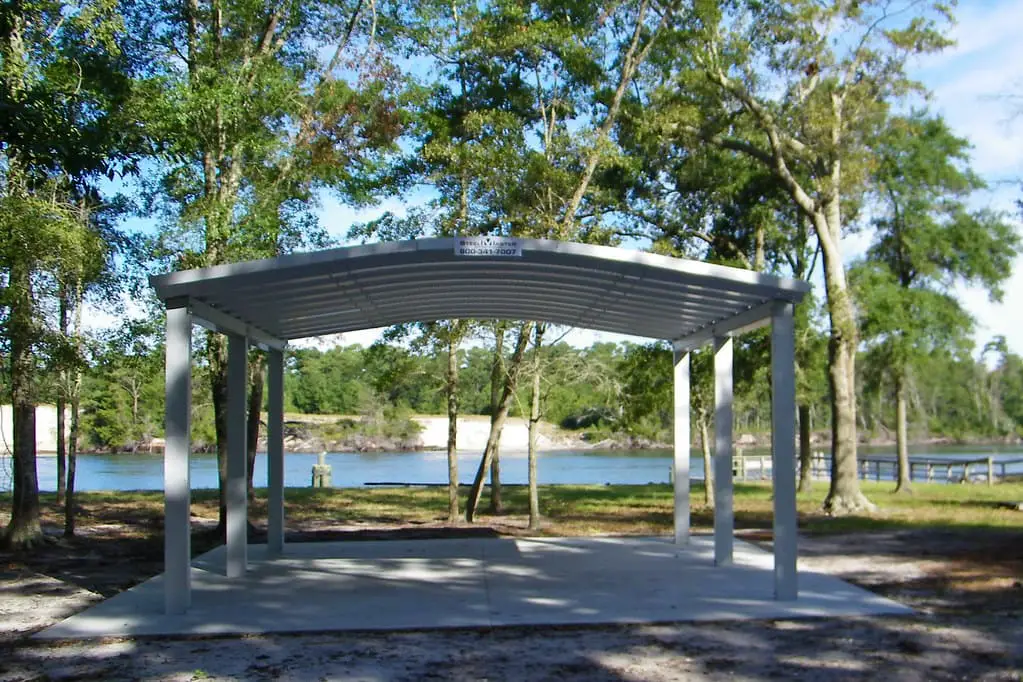
Yes, a gazebo can be used as a carport if it is square in shape and large enough to accommodate a car. However, most gazebos are not designed to function as carports, as they typically have raised ground and are not open on all sides.
Additionally, gazebos are designed to provide shade and shelter from the sun and rain, but they do not offer the same level of protection as a traditional carport. Alternative structures, such as pergolas and carports specifically designed for car storage, are often more suitable and offer better protection for cars.
Before deciding to use a gazebo as a carport, it’s important to consider the dimensions, design, and purpose of the structure, as well as the specific needs of the car.
Overview of Gazebo Design and Dimensions
A gazebo is an outdoor structure with a roof and open sides that can be used for shade or as a sheltered seating area. Gazebos come in different shapes and sizes but are usually hexagonal, octagonal, or square.
The most common dimensions for a gazebo are between 8 to 12 feet in diameter, although some can be larger. The height of a gazebo can vary, but they are typically between 8 to 12 feet tall. Gazebo designs can be simple or intricate, with various decorative elements such as railings, columns, and latticework.
While a gazebo can provide shade and shelter from light rain, it is not designed to protect a car from the elements. Most gazebos have raised ground which makes it difficult to drive a car in and out of them. Therefore, a gazebo is not suitable for use as a carport.
Comparison to Carport Requirements
When considering a carport or gazebo as a covered parking option, it’s important to understand the specific requirements of each structure. A carport is specifically designed to protect vehicles from the elements, with open sides that allow for easy access and ventilation.
Carports are typically larger and taller than gazebos, with enough space to comfortably park a car or even a small boat. In contrast, gazebos are not designed for vehicle parking and are typically smaller and have raised floors, making it difficult to drive in and out.
While gazebos can provide shade and shelter for people, they are not suitable for protecting cars from the elements. Therefore, it’s important to consider your specific needs when choosing between a carport and a gazebo for covered parking.
Advantages and disadvantages
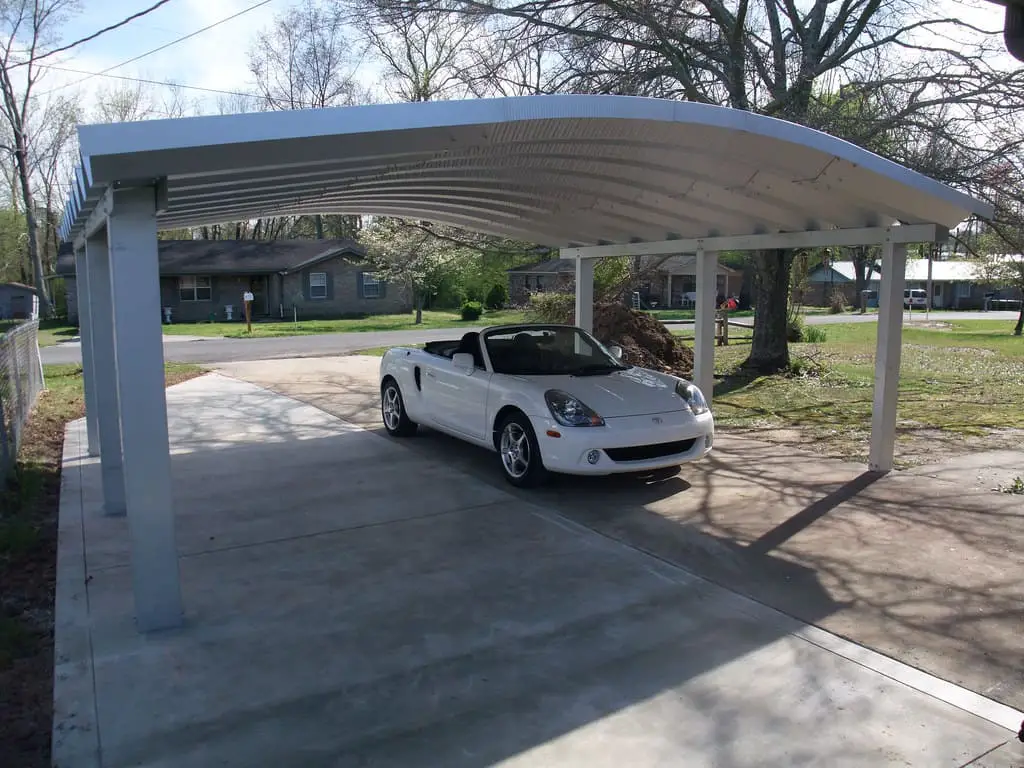
While gazebos and carports serve different purposes, here are some general advantages and disadvantages:
Advantages of a gazebo:
- Provides a space for outdoor recreation and relaxation
- Can enhance the aesthetic of a backyard or outdoor area
- Provides shade and shelter from light rain or sun
Disadvantages of a gazebo
- Not suitable for heavy-duty or industrial use
- Not designed to withstand the weight of a vehicle or heavy snow loads
- May require regular maintenance and upkeep to keep it in good condition
Advantages of a carport
- Provides shelter for a vehicle, protecting it from the elements
- Can be less expensive and easier to install than a garage
- Can increase property value and appeal
Disadvantages of a carport:
- Limited protection from theft or vandalism compared to a garage
- May not provide as much protection from severe weather as a fully enclosed garage
- May require permits or zoning approval in some areas.
Alternative Structures for Carports
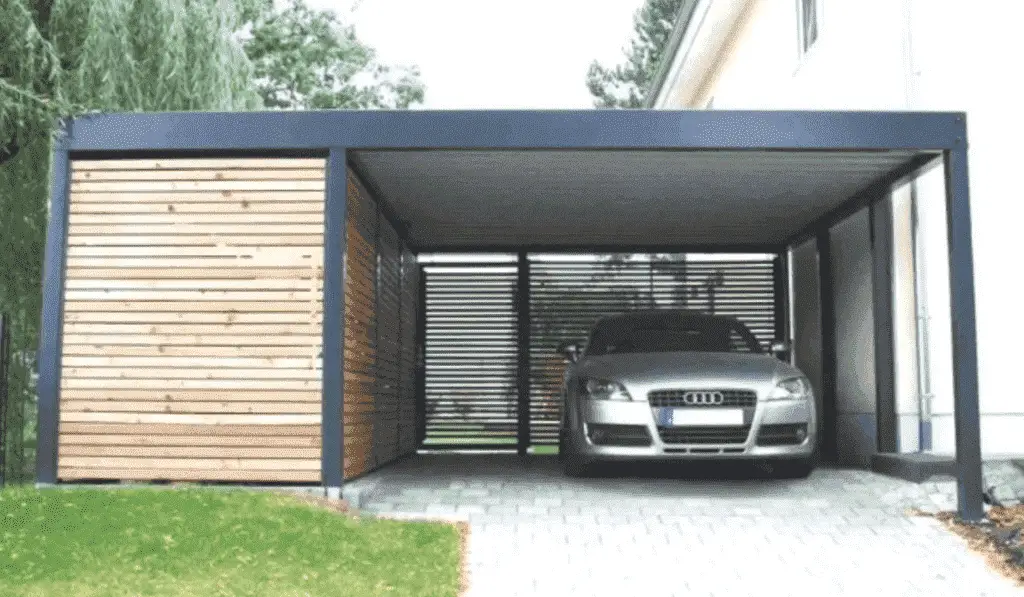
There are various alternative structures that can be used as carports, each with its own unique advantages and disadvantages. Some popular alternatives to traditional carports include metal carports, pole barns, and portable carports.
Metal carports are often made of steel or aluminum and can be freestanding or attached to an existing structure. They are durable and require minimal maintenance, making them a cost-effective option. Pole barns are another alternative that can be customized to fit specific needs, with options for insulation and ventilation.
They may be more expensive than other options and require a larger footprint, but they can be a good choice for those who want a more permanent structure. Portable carports, also known as canopy carports, are made of lightweight materials and can be easily assembled and disassembled as needed.
They are less durable than other options and may not offer as much protection from the elements, but they are an affordable and flexible solution. Ultimately, the best alternative structure for a carport will depend on individual needs, budget, and local building codes.
Other Outdoor Structures Suitable for Carports
In addition to metal carports, pole barns, and portable carports, there are other outdoor structures that can be suitable for use as carports. Here are a few examples:
Pergolas
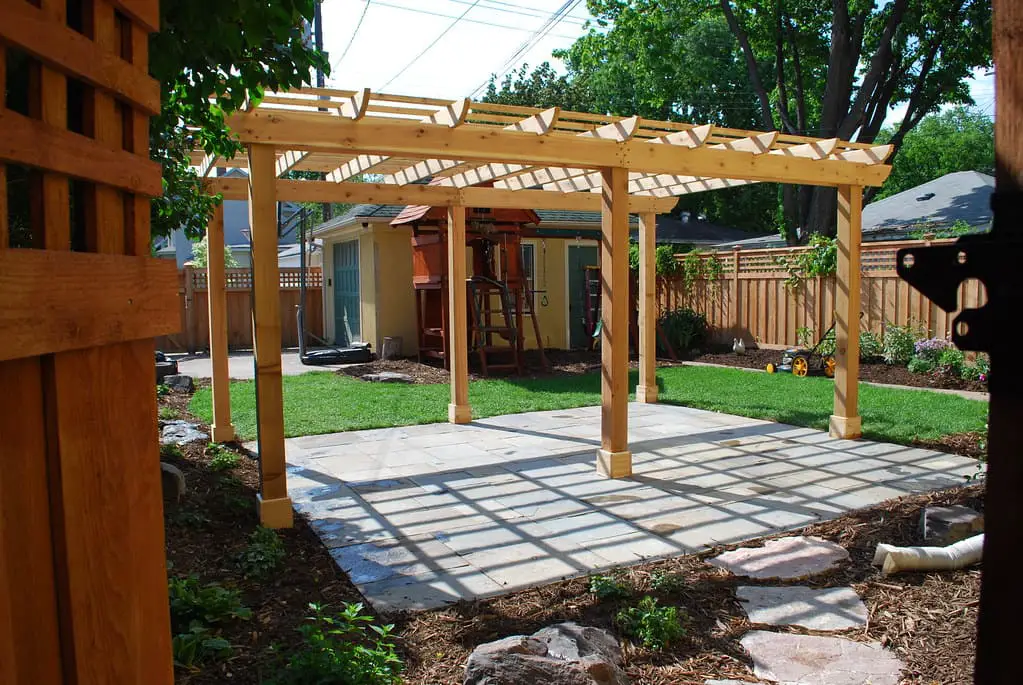
Pergolas are outdoor structures that have open roofs and are often used as a decorative element in a backyard or garden. However, they can also be used to provide shade and shelter for a vehicle. Pergolas can be customized to fit specific needs, and various materials such as wood, vinyl, or aluminum can be used in their construction.
Tents

Tents or canopy structures can be used as temporary carports, providing protection from the sun and rain. These structures are usually lightweight and can be easily set up and taken down as needed.
Garages
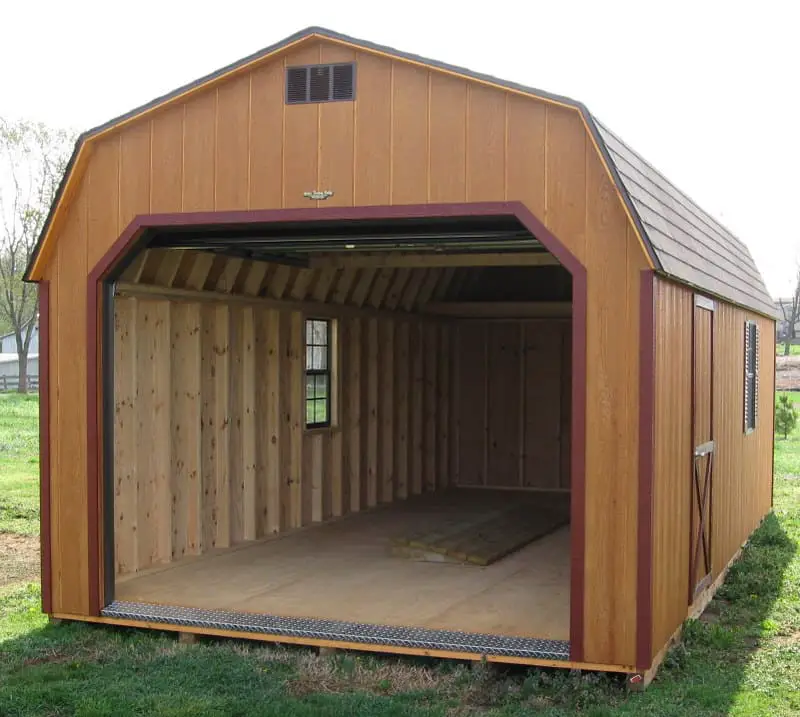
While not technically an outdoor structure, garages are a more permanent and secure option for vehicle storage. Garages can be attached to a home or built as a standalone structure, providing protection from the elements and added security.
Lean-to structures
Lean-to structures are attached to an existing building or wall and can be used as an extension of the building to provide covered parking. They can be customized to fit the size of the vehicle and provide added protection from the weather.
When choosing an outdoor structure as a carport, it’s important to consider the specific needs and requirements of the vehicle, as well as the local building codes and regulations.
Gazebos vs. Carport Structures
When comparing structures for use as a carport, gazebos are not typically considered as they are generally designed as a decorative or functional outdoor feature rather than a vehicle shelter.
Gazebos are freestanding structures with open sides and a roof, often used as an outdoor gathering space or a shelter for a hot tub or outdoor kitchen. While they may offer some protection from the elements, they do not provide adequate shelter for a vehicle.
In contrast, structures like metal carports, pole barns, and garages are specifically designed for vehicle storage and provide better protection from the elements.
However, a pergola or lean-to structure could potentially be customized to provide vehicle shelter while also incorporating some of the aesthetic features of a gazebo. Ultimately, the best structure for use as a carport will depend on individual needs and requirements.
Other Uses for Gazebos

If you have a gazebo and don’t know what to do with it, you can use it as an outdoor seating area or as a centerpiece for your garden. You can put it in your front or backyard to create a nice spot to sit and enjoy the outdoors.
You can also use it to park small vehicles like motorcycles or bicycles. Since gazebos have columns, you can drive your motorcycle through them and use the roof to protect your vehicle from the weather
However, you need to be careful since the floor of the gazebo is slanted and you’ll need to guide your bike with your hands.
Modifying Gazebos for Use as a Carport
While gazebos are not typically designed for use as a carport, there are some modifications that can be made to adapt them for this purpose. One option is to add a solid roof to the gazebo to provide better protection from the elements.
Additionally, the sides of the gazebo can be enclosed with walls or screens to create a more enclosed space for the vehicle. However, it’s important to ensure that the structure can safely support the weight of a vehicle and meet local building codes and regulations.
It’s also important to consider the size and shape of the vehicle to ensure that the modified gazebo provides adequate shelter and clearance.
Ultimately, while a gazebo may not be the most practical choice for use as a carport, with the right modifications and careful consideration, it could be a unique and visually appealing option for vehicle storage.
Cost and Feasibility of Modifying a Gazebo as a Carport
The cost and feasibility of modifying a gazebo to function as a carport will depend on several factors, such as the size and design of the gazebo, the type of modifications required, and the local building codes and regulations.
Adding a solid roof and enclosing the sides of the gazebo may require additional materials and labor costs, as well as the expertise of a professional contractor. It’s also important to consider the long-term maintenance and upkeep costs associated with the modified structure. While modifying a gazebo for use as a carport may be feasible for some individuals,
it may not be the most cost-effective option compared to other outdoor structures designed specifically for vehicle storage. Ultimately, careful consideration of the costs and feasibility of modifications is necessary before embarking on any such project.
How do carports increase a home’s value?

If you have a car but your home doesn’t have a garage or a small one, installing a good quality carport can add value to your home. A carport provides a sheltered space to park your car and protect it from the weather.
This is especially important for people who live in areas with harsh weather conditions. Having a carport can increase the value of your home when you decide to sell it in the future.
Buyers often look for homes that have a carport or garage, so adding a carport can make your home more appealing.
A carport can be useful for your home in different ways:
- It provides a covered area for parking your car.
- You can use it for extra storage space.
- You don’t have to do much to take care of it.
- You can use it for hanging out outside.
- If it’s well-built, it can make your home more attractive.
Before you get a carport, you can look at other homes to get ideas, or talk to a professional to make sure you choose the right one for your home.
FAQs
Q.1 Can a pergola be used as a carport?
For instance, if a pergola is attached to a building and has a solid roof, it can be used as a carport to shelter a car. Another type of outdoor structure similar to a pergola is called an arbor.
Q.2 Do you need permission for a carport?
Do I need permission to build a carport? No, you may not need permission to install a carport if it follows certain rules. These rules vary depending on your property and location. It is better to ask an expert for guidance to ensure you follow the correct regulations.
Q.3 What size carport can I build without consent?
A carport is a place where you can park your car and protect it from the weather. It should have a roof held up by posts, and one side must always be open. If you want to build a carport that is larger than 40 square meters, you will always need to get a building permit.
Q.4 What is the minimum length of a carport?
A single carport usually takes up an area of about 3.4 meters by 5.8 meters. This is enough space for one car. If you want more room around your car, you can ask to make the carport bigger or smaller.
Q.5 Can I build a canopy without planning permission?
A canopy is a type of covering for your home or garden. You usually don’t need permission to install a canopy unless it’s very big or you’ve already made a lot of changes to your home. Canopies are like extensions to your home, so there are rules about how big they can be. You need to make sure your canopy is within the size limits allowed by the rules.
Conclusion
In conclusion, while it is possible to use a square-shaped gazebo as a carport, most gazebos are not designed for this purpose due to their raised ground and limited protection from the elements. Carports, on the other hand, are specifically designed to protect vehicles from the sun, rain, and snow, and offer more space and better protection.
When considering a carport or gazebo as a covered parking option, it’s important to understand the specific requirements of each structure and to consider your specific needs. Alternative structures such as metal carports and pole barns may offer cost-effective and customized solutions for car storage.
We hope you will be well aware after can a gazebo be used as a carport by reading this comprehensive guide. If you have any questions, feel free to comment below!

